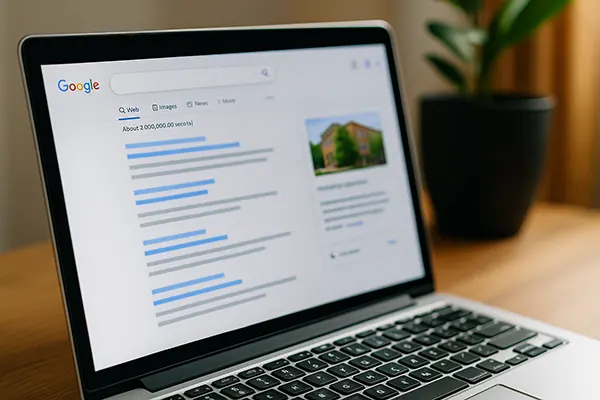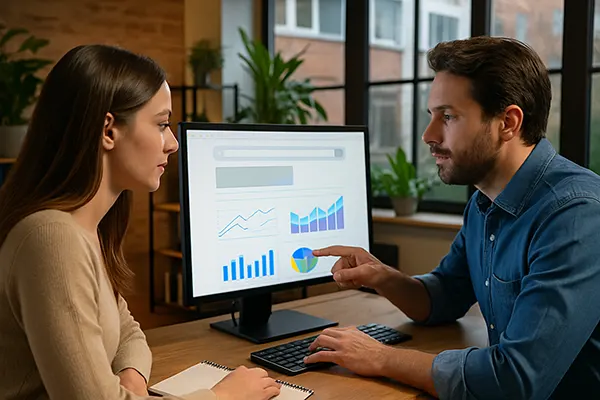Using Google’s Zero-Click Results in Strategic SEO in 2025

As Google continues to refine its search algorithms, the prominence of zero-click results has significantly impacted how users interact with content online. In 2025, these results are not just a passing trend—they are a defining feature of modern search experiences. This shift necessitates a thoughtful reassessment of SEO strategies that prioritise visibility, authority, and user trust.
Understanding the Impact of Zero-Click Searches
Zero-click searches refer to search results that satisfy the user’s query without requiring a click-through to a website. These include featured snippets, knowledge panels, definitions, calculators, and instant answers. According to recent data from June 2025, more than 60% of all Google searches in English-speaking countries result in zero clicks.
This trend indicates a strong shift toward on-SERP content delivery, where Google aims to resolve queries directly within the search page. For users, this means quicker answers. For businesses, however, it poses a challenge: how to maintain brand visibility and authority when traffic is no longer a reliable indicator of success.
SEO specialists must now focus on metrics beyond traffic—such as brand mentions, E-E-A-T alignment, and engagement with other search verticals. The goal is no longer just to be clicked but to be seen as a trusted source of information, even when a visit to the site doesn’t happen.
Why Zero-Click Doesn’t Mean Zero Opportunity
While zero-click results may reduce direct site visits, they also offer opportunities to build brand recognition and topical authority. Being featured in snippets or panels shows Google’s confidence in your content. This visibility can influence future purchasing decisions, even if the user doesn’t immediately engage with your website.
To leverage this, content creators must write with the user in mind. Structured, concise answers to common queries are more likely to be featured by Google. Content should also be schema-marked to help Google extract and display information effectively.
Moreover, appearing in zero-click spaces is often the first step in a longer customer journey. Brand recall can lead to direct searches later, bypassing organic listings altogether. In this sense, visibility becomes a brand asset, not just a channel metric.
Adapting Content Strategy to E-E-A-T and SERP Features
The E-E-A-T principles—Experience, Expertise, Authoritativeness, Trustworthiness—have never been more crucial. Google continues to refine its ranking signals to prioritise content that reflects real-world expertise and trust. In 2025, this aligns closely with the rise of zero-click content: only the most credible sources are granted high-visibility placements.
To optimise for these principles, websites must clearly demonstrate who wrote the content and why it’s reliable. Including author bios, citing sources, and linking to relevant internal pages adds layers of credibility. Sites that provide surface-level summaries or automated filler content struggle to appear in competitive SERP features.
Google’s quality raters are trained to evaluate how well a page reflects E-E-A-T principles. This means high-quality content must show the creator’s background, the process of creation, and the intent to inform—not just to rank. Focusing on this will improve chances of selection for zero-click formats.
Creating Content that Earns Featured Snippets
Featured snippets dominate zero-click territory. To earn them, content must be formatted to match Google’s preferred structures: bullet lists, tables, FAQs, and definition-style paragraphs. Keeping paragraphs under 50 words and targeting high-intent queries improves snippet potential.
Pages should directly answer “what,” “how,” “why,” and “who” type questions. Keyword research must identify where snippets already exist and where content gaps remain. The goal isn’t just ranking but becoming the preferred answer.
Using schema.org markup, proper H2-H3 structuring, and canonical linking helps reinforce topical relevance. These elements make it easier for Google’s crawlers to interpret and reuse content within its zero-click features.

Measuring Success Without Clicks
Traditional SEO KPIs such as CTR and bounce rate are becoming less indicative of success in a zero-click landscape. In 2025, brands should embrace new ways of measuring impact: impression share, SERP visibility, and brand sentiment analysis are now at the forefront.
Google Search Console and third-party tools now offer enhanced visibility reports that show how often a brand appears in featured snippets or knowledge panels. These impressions, even without clicks, indicate the reach and trust Google attributes to the content.
Additionally, tracking branded searches, direct traffic growth, and engagement on owned channels (like YouTube or Google Business Profiles) offers a broader picture of SEO ROI. Visibility fuels awareness, and awareness fuels conversion—even if the path is no longer linear.
Strategic SEO in a Post-Click World
SEO in 2025 demands a mindset shift. It’s no longer just about funnelling users onto your site, but about providing answers, establishing authority, and being present where users need you—even if they don’t click. This means optimising not just for search engines but for users’ real-world questions and habits.
Businesses must integrate SEO with PR, content marketing, and brand strategy. A well-ranked snippet today could be the reason someone chooses your product tomorrow. Reputation is the new currency of organic search.
By embracing zero-click as an opportunity, not a setback, marketers can future-proof their visibility strategies and ensure lasting brand impact in a rapidly evolving search environment.
